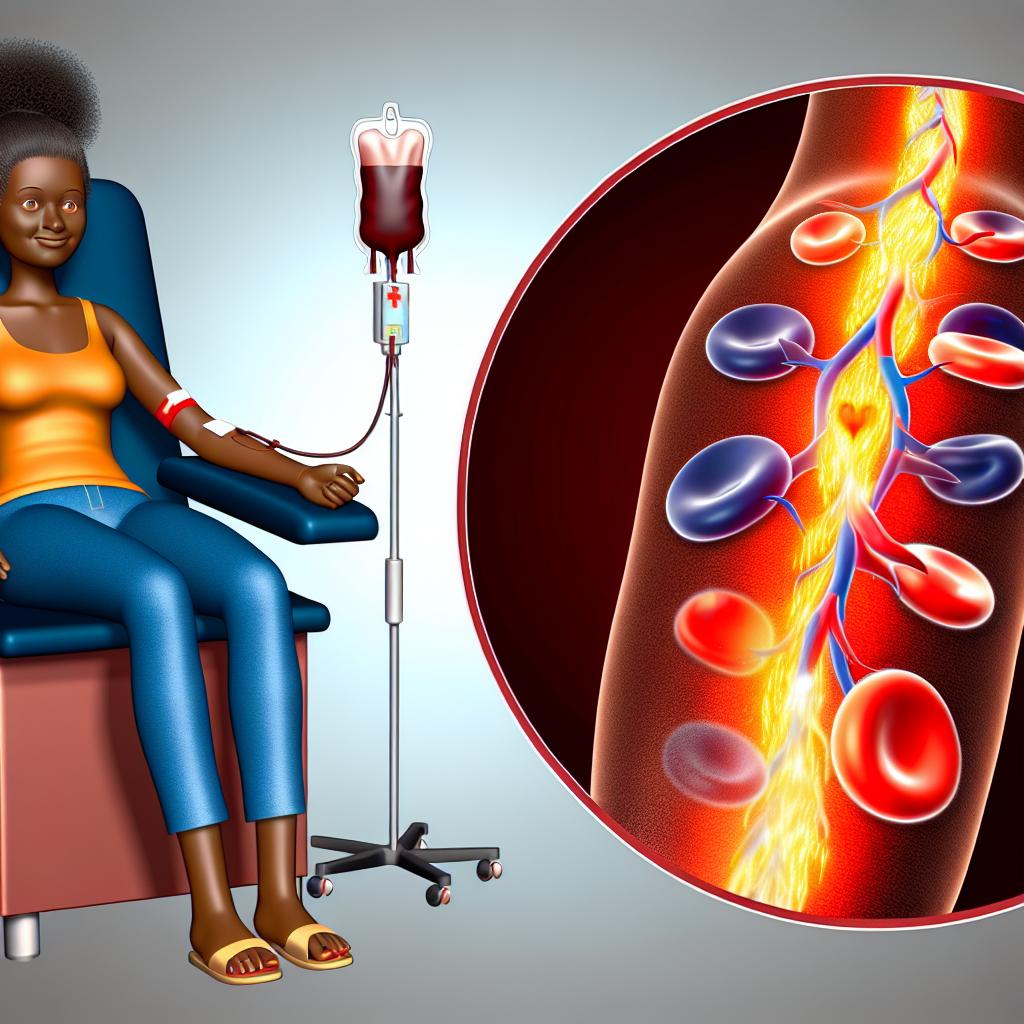Understanding Blood Donation and Circulation
Blood donation stands as a remarkable act of altruism, providing crucial support in medical care by saving lives. Yet, beyond its societal impact, blood donation may offer physiological rewards to the donors themselves, particularly through benefits to blood circulation.
The Physiology of Blood Circulation
Blood circulation is a fundamental process within human physiology, serving the critical function of consistently supplying oxygen and nutrients across the body’s diverse tissues and organs. Moreover, blood circulation is responsible for the removal of waste products, which are directed to the excretory systems for disposal. The effectiveness of this process inherently affects overall health, thereby playing a pivotal role in maintaining homeostasis and facilitating numerous bodily functions.
When we consider circulation, it is essential to understand the heart’s central role as a pump, the extensive network of arteries carrying oxygen-rich blood from the heart, and veins returning deoxygenated blood back. Healthy circulation ensures that tissues receive adequate oxygen supply, supporting metabolic activities, and is integral for immune function, disease prevention, and cellular repair mechanisms.
The Act of Donating Blood
The procedure of donating blood involves the extraction of approximately 450-500 milliliters which constitutes a minor portion compared to the total blood volume—approximately 5-6 liters—in a healthy adult. The body is physiologically equipped to manage and replenish this loss without jeopardizing the donor’s health, making blood donation a safe act for eligible individuals.
How Blood Donation Affects Circulation
In the realm of circulation enhancement, blood donation can exert influence through significant mechanisms, particularly in reducing blood viscosity. By decreasing the thickness of the blood, it flows more smoothly through vessels, effectively enhancing circulation. This reduction in viscosity is advantageous as it may facilitate easier passage of blood, lowering the strain on the cardiovascular system and promoting efficient nutrient and oxygen delivery to tissues.
Additionally, the act of donating blood triggers a compensatory response in the body to produce new red blood cells. This process of hematopoiesis—marrow stimulation and red blood cell production—acts as a rejuvenating mechanism. Through this, the body refreshes its blood supply, potentially improving circulation and ensuring efficient oxygen transport.
The Role of Iron Levels
The regulation of iron levels through regular blood donation is another aspect influencing circulation. Iron is a vital constituent of hemoglobin, which is responsible for oxygen transport in red blood cells. Regular blood donation aids in maintaining iron homeostasis, reducing the risk of excessive iron accumulation, which can contribute to oxidative stress.
By balancing iron levels, the oxidative burden on blood vessels is minimized, supporting healthier vessel function and indirectly promoting proper circulation. This balance is especially pertinent as excess iron can promote the generation of free radicals, contributing to vascular damage and impairing circulatory health.
Scientific Perspectives
An array of studies underscores the physiological benefits of blood donation. For regular donors, research highlights a correlation with decreased risk factors for cardiovascular ailments—a potential outcome linked to improved hemodynamics and reduced oxidative stress on vascular structures. These findings are accompanied by a deeper exploration of the biological interactions precipitated by blood donation that could enhance circulatory efficiency.
Scientific inquiry delves into the effects of reduced blood viscosity and the adaptive hematological responses, examining their implications in cardiovascular health. Despite promising indications, the field continues to seek comprehensive understanding, exploring the breadth of health impacts and refining recommendations for donor physiology.
Conclusion
Primarily recognized as a life-saving gift for patients requiring blood transfusions, blood donation simultaneously harbors health benefits for the donor, most notably in terms of optimized blood circulation. These improvements contribute to better cardiovascular function and highlight an intriguing aspect where altruism intersects with personal health benefits.
For those interested in pursuing regular blood donation, it represents a tangible action that supports community health infrastructure while potentially enhancing one’s own cardiovascular wellness. To engage in this practice, it is imperative to assess eligibility and adhere to medical guidelines safeguarding donor health.
To delve further into the multifaceted benefits of blood donation or to find additional resources on how to become a donor, please explore this [resource](https://www.redcrossblood.org).
Incorporating blood donation into one’s routine not only exemplifies a commitment to helping others but also serves as a means to potentially optimize personal health, notably in the realm of blood circulation. For individuals contemplating this practice, engaging in informed decision-making with guidance from healthcare professionals ensures both safety and maximal benefit.
